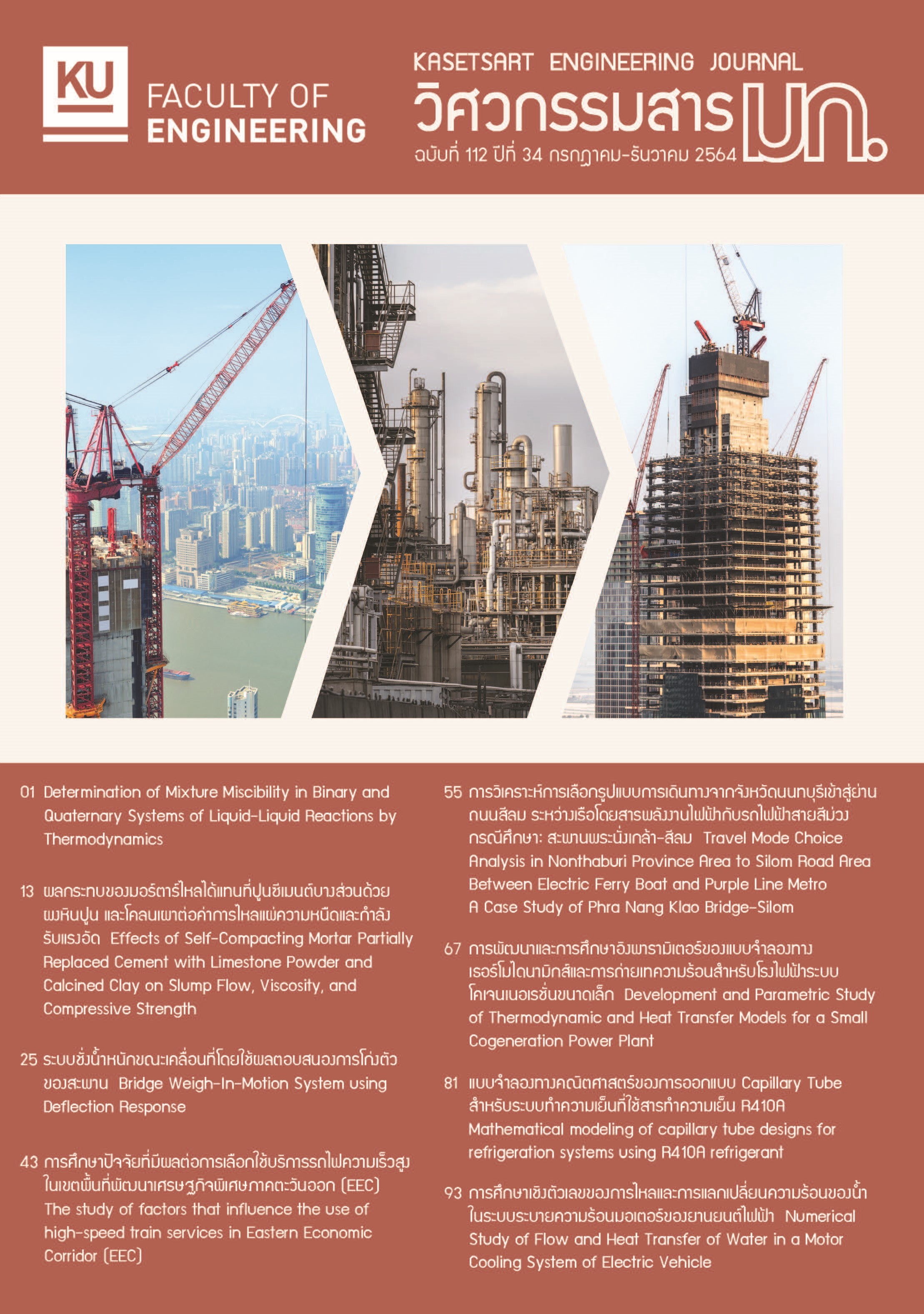Mathematical modeling of capillary tube designs for refrigeration systems using R410A refrigerant
Keywords:
vapor compression refrigeration, capillary tube, mathematical modeling, designAbstract
The capillary tube is an important device for vapor compression refrigeration systems to control refrigerant pressure and flow rate. Today, there are still many operators who lack the knowledge to use capillary tubes. The choice of equipment is largely based on the experience of the operator and the use of trial and error. Improper and incorrect selections will result in system malfunctions and affect the system's energy efficiency as well. In this work, a mathematical model of the design of capillary tubes for R410A refrigeration systems was developed. R410A was selected for this study as a replacement for R22. Hydrochlorofluorocarbon refrigerants must be discontinued in the near future for reasons of ozone depletion potential. The model evolved from the idea that the refrigerant flowing through the capillary tube changes its properties along the length of the tube through it. The capillary tube is divided into smaller control volumes. The law of conservation of mass, law of conservation of energy, and law of conservation of momentum have been applied to each control volume. The initial parameters consist of the size of the conditioner, the fluid flow rate, and the initial capillary tube size. The model can analyze the properties of the refrigerant, flow velocity, Reynold number, and friction continuously. This model makes the capillary tube design more accurate. It reduces trial and error and reduces the possibility of system malfunctions and failures. Model analysis results in the cooling system operating efficiently and saving energy.
References
Yong HJ, and Yongchan K (2004). A Generalized Correlation and Rating Charts for Mass Flow Rate through Capillary Tubes with Several Alternative Refrigerants. International Journal of Air-Conditioning and Refrigeration, 12(4): 192-197.
Kamlendra SR, and RC Gupta (2018). Flow of refrigerants through a capillary tube – A Review. International Journal for Research Trends and Innovation, 3(12).
Khaled M, and Amr O (2006). A Practical Method of Selecting Capillary Tubes for HCFC22 Alternatives, International Refrigeration and Air Conditioning Conference at Purdue.
Shashank SP, and Prakhar S (2014). Effect of capillary tube on the performance of a simple vapour compression refrigeration system. IOSR Journal of Mechanical and Civil Engineering, 11(3): 5-7.
SO Oyedepoa, and RO Fagbenleb (2016). Effect of Capillary Tube Length and Refrigerant Charge on the Performance of Domestic Refrigerator with R12 and R600a. International Journal of Advanced Thermofluid Research, 2(1).
K Neelakanta, and V Arundhati (2017). The Effect of Capillary Tube Length on the Performance of Vapour Compression Refrigeration System. International Journal of Scientific Engineering and Technology Research, 6(11): 2275-2281.
Mehdi R., and Ji HJ (2017). Assessment of Dimensionless Correlations for Prediction of Refrigerant Mass Flow Rate Through Capillary Tubes — A Review. International Journal of Air-Conditioning and Refrigeration, 25(4): 13.
ASHRAE Handbook—Refrigeration (2018).
Elgendy E, and J Schmidt (2013). Rating Charts of R-22 Alternatives Flow through Adiabatic Capillary Tubes. International Journal of Mechanical and Mechatronics Engineering, 7(8): 1632-1639.
Sahoo K, and Das S (2014). Theoretical Design of adiabatic capillary tube of a domestic refrigerator using refrigerant R-600a. American Journal of Engineering Research, 3(5): 306-314.
Downloads
Published
Issue
Section
License

This work is licensed under a Creative Commons Attribution-NonCommercial-NoDerivatives 4.0 International License.


